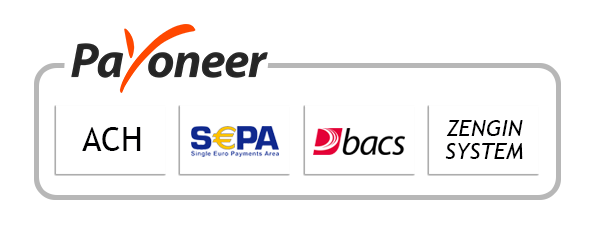
-
Report ID 138363 -
Published Date Nov. 2024 -
Delivery Format PDF/PPT/Word -
Editor's Rating
-
Report Details
Report Overview
The Global Cloud Enabling Technology Market size is expected to be worth around USD 73.2 Billion By 2033, from USD 34.2 Billion in 2023, growing at a CAGR of 7.90% during the forecast period from 2024 to 2033.
Cloud Enabling Technology refers to the range of solutions and systems that facilitate the scalability, management, and operation of cloud services. These technologies provide the necessary infrastructure to deliver cloud computing, which includes virtualization software, management tools, and development platforms.
The broad spectrum of cloud enabling technologies assists businesses in transitioning from traditional on-premise systems to cloud-based services, offering scalability, reduced capital expenditure, and increased operational flexibility.
The Cloud Enabling Technology market is experiencing robust growth due to increasing adoption of multi-cloud and hybrid cloud strategies among businesses necessitates advanced cloud enabling technologies that can seamlessly integrate and manage different cloud environments. Ongoing digital transformation initiatives across various industries demand scalable and flexible cloud infrastructure that can support large volumes of data and high-speed analytics.
Additionally, the growing emphasis on cost reduction and operational efficiency encourages companies to invest in cloud technologies that minimize hardware expenses and administrative overhead. Security enhancements provided by cloud enabling technologies also contribute to their rising demand, as businesses seek robust solutions to protect their data and comply with regulatory requirements.
There is a growing demand for cloud enabling technologies as businesses of all sizes are looking to leverage the cloud’s potential to enhance operational efficiency and innovate service delivery. The push towards digital transformation has made cloud services essential, encouraging providers to innovate and expand their offerings to meet the diverse needs of different industries.
Cloud enabling technologies have gained significant popularity due to their ability to provide on-demand access to computing resources without the direct management by users. This popularity is especially pronounced among startups and small businesses that benefit from the reduced capital expenditure and the ability to scale resources according to demand.
The market is ripe with opportunities, especially in the areas of cloud security, hybrid cloud solutions, and enterprise mobility. Providers who offer unique, easy-to-integrate solutions that ensure data security, compliance, and efficient resource management are particularly well-positioned to capitalize on these opportunities.
Expansion in the cloud enabling technology market is set to accelerate as more businesses adopt cloud-first strategies. The expansion is further fueled by the growing integration of AI and machine learning technologies, which enhance cloud platforms’ capabilities and enable more personalized, responsive, and efficient services. This trend is likely to continue as advancements in technology create new possibilities for cloud-based solutions.
Key Takeaways
- The Cloud Enabling Technology Market is poised for significant growth over the next decade. By 2033, the market size is anticipated to reach approximately USD 73.2 Billion, rising from USD 34.2 Billion in 2023, CAGR of 7.9% from 2024 to 2033.
- The public segment held a commanding position in 2023, capturing over 49.3% of the market. This indicates a strong preference for public cloud solutions among businesses seeking scalable and cost-effective cloud technologies.
- The Software-as-a-Service (SaaS) segment also demonstrated robust performance, accounting for 57.1% of the market in 2023. SaaS remains a dominant force, reflecting its widespread adoption across various industries due to its ease of use and deployment.
- The BFSI sector similarly showed significant engagement, securing 24.8% of the market share. This sector’s reliance on cloud technologies underscores the critical role of cloud solutions in supporting financial services’ scalability and security needs.
- Geographically, North America maintained a leading position in the global market, holding more than 40% of the market share in 2023. This dominance is supported by advanced technological infrastructure and a strong adoption rate of cloud technologies across businesses in the region.
Deployment Analysis
In 2023, the Public cloud segment held a dominant market position, capturing more than a 49.3% share of the cloud enabling technology market. This segment leads primarily due to its scalability and cost-effectiveness, which appeal to a wide range of businesses seeking flexible and economical solutions for their computing needs.
The public cloud is also favored for its ease of deployment and widespread availability. Providers such as Amazon Web Services, Microsoft Azure, and Google Cloud Platform have built robust global networks that ensure high availability and performance, which are critical for businesses operating in multiple regions.
Furthermore, the public cloud segment benefits from a strong perception of reliability and security, enhanced by ongoing investments from major cloud providers in cybersecurity measures. These providers often meet higher regulatory compliance standards, which reassures businesses and encourages them to adopt public cloud solutions.
Service Analysis
In 2023, the Software-as-a-Service (SaaS) segment held a dominant market position within the Cloud Enabling Technology market, capturing more than a 57.1% share. This segment’s leadership is primarily due to its straightforward deployment model and its ability to provide businesses with cost-effective, scalable, and easy-to-update software solutions.
SaaS eliminates the need for organizations to install, maintain, or upgrade software, as service providers manage all potential technical issues. This convenience and reduced overhead are especially appealing to small and medium-sized enterprises that may not have the resources for significant upfront investments in IT infrastructure.
The prevalence of SaaS is also bolstered by its wide range of applications, including customer relationship management (CRM),enterprise resource planning (ERP), and more. These applications are crucial for daily business operations and help businesses optimize their workflows and improve productivity without substantial internal IT support.
The rapid growth in the adoption of SaaS is fueled by the increasing trust in cloud security measures, ongoing enhancements in data encryption, and strict compliance with international data protection regulations. Businesses are more comfortable than ever utilizing cloud-based services to handle sensitive data, driving growth in the SaaS sector.
Industry Vertical Analysis
In 2023, the BFSI (Banking, Financial Services, and Insurance) segment held a dominant market position within the Cloud Enabling Technology market, capturing more than a 24.8% share. This leading stance is largely attributed to the sector’s robust need for cloud solutions that enhance data security, regulatory compliance, and customer service efficiency.
Financial institutions are particularly keen on adopting cloud technologies that can help them manage the vast amounts of sensitive data they handle daily while adhering to strict regulatory standards.The drive towards digital transformation in BFSI also significantly contributes to the dominance of this segment.
As banks and financial services firms strive to meet the rising demands for seamless, personalized customer experiences, they are increasingly turning to cloud-based solutions. These solutions facilitate the development and deployment of mobile banking, real-time payments, fraud detection systems, and other customer-oriented services. Also, the BFSI sector’s emphasis on disaster recovery and business continuity planning further propels the adoption of cloud enabling technologies.
Key Market Segments
By Deployment
- Public
- Private
- Hybrid
By Service
- Platform-as- a-Service (PaaS)
- Software-as-a-Service (SaaS)
- Infrastructure-as-a-Service (IaaS)
By Industry Vertical
- BFSI
- Healthcare
- IT& Telecom
- Retail
- Manufacturing
- Other Industry Verticals
Driver
Rising Demand for Cost-Efficient IT Infrastructure
One of the core drivers of the cloud enabling technology market is the growing demand for cost-effective IT infrastructure solutions. Businesses are increasingly prioritizing cloud computing due to its ability to reduce operational and maintenance costs.
Traditional IT setups require large investments in hardware, software, and in-house IT teams to maintain systems, which can be a financial strain on small to medium enterprises (SMEs). Cloud technology eliminates these needs by offering a “pay-as-you-go” model, where businesses only pay for the resources they use.
Moreover, companies with global operations can use cloud services to synchronize their IT systems across regions, ensuring a seamless flow of information and reducing operational complexity. As more companies recognize these cost-saving advantages, the demand for cloud enabling technologies is anticipated to rise, driving market growth.
Restraint
Security and Data Privacy Concerns
While cloud enabling technologies offer significant advantages, concerns around data security and privacy act as a major restraint in this market. Businesses overall deal with sensitive data that requires strict protection. Migrating data to cloud platforms can raise concerns about data breaches, unauthorized access, and data leaks, which can be detrimental to business integrity and customer trust.
Regulatory requirements add another layer of complexity to cloud adoption. Laws like GDPR in Europe and HIPAA in the United States require organizations to maintain strict data handling practices. Non-compliance can lead to severe financial penalties and reputational damage, making businesses wary about fully relying on cloud services. Additionally, cloud providers’ varied approaches to data security can further complicate the decision-making process.
Opportunity
Expansion of Edge Computing
The rise of edge computing presents a promising opportunity within the cloud enabling technology market. Edge computing allows data to be processed closer to its source, which reduces latency and enhances performance, especially for real-time applications.
Industries such as telecommunications, manufacturing, and automotive are embracing edge computing to support latency-sensitive tasks and improve response times for applications like IoT devices and autonomous vehicles.
Cloud providers are recognizing the opportunity in the edge space and are investing in edge data centers and solutions. Amazon Web Services, Microsoft Azure, and Google Cloud have already started to expand their edge service offerings to meet this growing demand.
Challenge
Interoperability Between Cloud Platforms
A major challenge in the cloud enabling technology market is ensuring interoperability between different cloud platforms. Many businesses adopt a multi-cloud strategy, utilizing services from multiple providers to avoid vendor lock-in and optimize performance. However, differences in protocols, standards, and architectures across cloud providers can lead to integration difficulties, making it challenging for companies to synchronize operations across platforms.
This lack of interoperability also complicates data migration, making it harder for companies to shift workloads or optimize their cloud environments. Businesses often require specialized tools or professional services to bridge gaps between platforms, increasing their operational expenses.
Emerging Trends
Cloud enabling technology is rapidly transforming businesses by providing scalable, on-demand access to critical resources, enhancing flexibility, and promoting cost-effectiveness. One of the most significant trends is the rise of multi-cloud strategies. Companies are increasingly leveraging multiple cloud providers to optimize costs, reduce dependency on a single vendor, and ensure data resilience.
Another notable trend is the emphasis on cloud-native technologies. Solutions like Kubernetes and microservices architectures are gaining traction because they allow organizations to develop, deploy, and manage applications that are fully optimized for the cloud.
Edge computing is also emerging as a key component in cloud enabling technologies. By processing data closer to where it is generated, edge computing reduces latency and enhances real-time decision-making. This trend is especially significant for industries such as manufacturing and healthcare, where timely data processing is critical.
AI and machine learning integration with cloud services is becoming mainstream. Cloud providers are increasingly embedding AI-driven analytics tools into their platforms, enabling businesses to derive insights from vast datasets quickly.
Business Benefits
The adoption of cloud-enabling technologies offers businesses several key benefits, transforming how they operate, innovate, and compete. Cost reduction is one of the primary advantages. By moving to the cloud, companies no longer need to invest heavily in physical infrastructure and the cloud’s pay-as-you-go model also enables companies to scale resources up or down based on demand, further optimizing expenses.
Another significant benefit is enhanced agility. Cloud-enabled environments allow businesses to quickly deploy applications and services, supporting rapid innovation. Developers can use cloud tools to experiment and launch new features without complex setups or delays.
Cloud-enabling technologies also promote collaboration and remote work. With data and applications accessible from anywhere, teams can collaborate in real time, regardless of their location. This flexibility boosts productivity and allows companies to attract a more diverse, geographically dispersed workforce.
Regional Analysis
Predominantly, the widespread acceptance of cloud-based solutions across major industries such as finance, healthcare, and retail drives this dominance. North American companies have been early adopters of cloud services, leveraging advanced infrastructure and a robust regulatory framework that supports cloud expansion.
North America is home to leading cloud service providers such as Amazon Web Services, Microsoft Azure, and Google Cloud, which continuously innovate and expand their services across the region. These giants invest heavily in building and maintaining state-of-the-art data centers that not only enhance their service delivery but also encourage local businesses to transition to cloud-based operations.
The region’s commitment to high standards of security and data privacy, aligned with global best practices and regulatory compliance, also contributes to its leading position. Stringent regulations enforce rigorous data handling standards, making cloud solutions favorable due to their built-in compliance and security features.
Key Regions and Countries
- North America
- US
- Canada
- Europe
- Germany
- France
- The UK
- Spain
- Italy
- Rest of Europe
- Asia Pacific
- China
- Japan
- South Korea
- India
- Australia
- Rest of APAC
- Latin America
- Brazil
- Mexico
- Rest of Latin America
- Middle East & Africa
- South Africa
- Saudi Arabia
- UAE
- Rest of MEA
-
Table Of Content
Research Insights & Deliverables
 Development and Future Forecast
Development and Future Forecast Competitive benchmarking
Competitive benchmarking Company Revenue Statistics
Company Revenue Statistics Rising Regional Opportunities
Rising Regional Opportunities Technology Trends and Dynamics
Technology Trends and Dynamics Technology Assessment
Technology Assessment
-
Inquiry Before Buying
Research Insights & Deliverables
 Development and Future Forecast
Development and Future Forecast Competitive benchmarking
Competitive benchmarking Company Revenue Statistics
Company Revenue Statistics Rising Regional Opportunities
Rising Regional Opportunities Technology Trends and Dynamics
Technology Trends and Dynamics Technology Assessment
Technology Assessment
-
Request Sample
Research Insights & Deliverables
 Development and Future Forecast
Development and Future Forecast Competitive benchmarking
Competitive benchmarking Company Revenue Statistics
Company Revenue Statistics Rising Regional Opportunities
Rising Regional Opportunities Technology Trends and Dynamics
Technology Trends and Dynamics Technology Assessment
Technology Assessment














